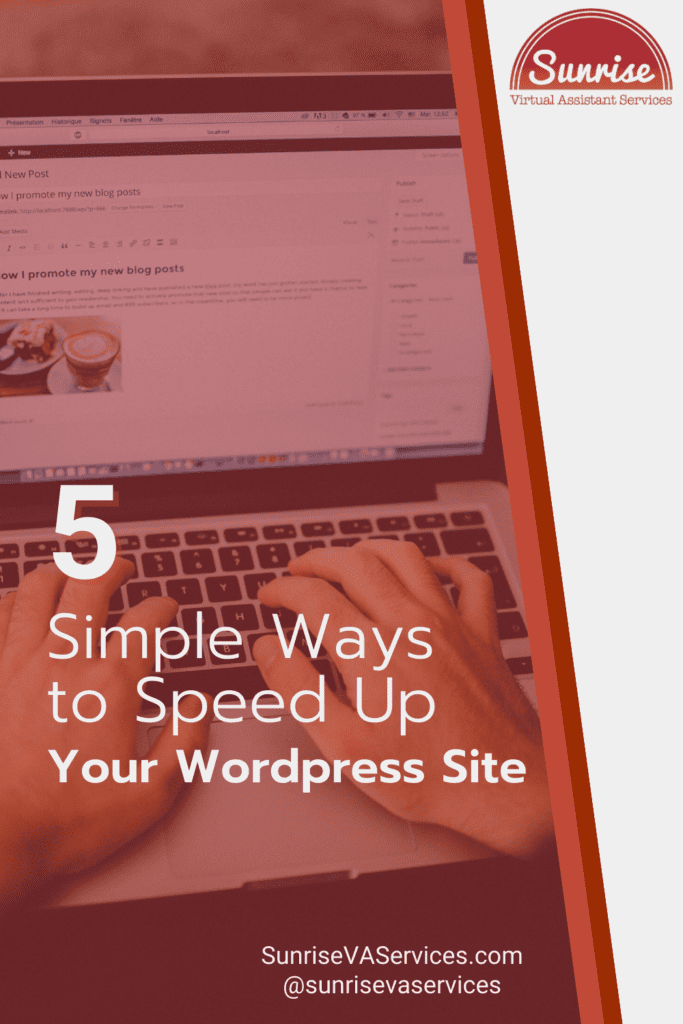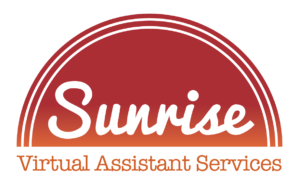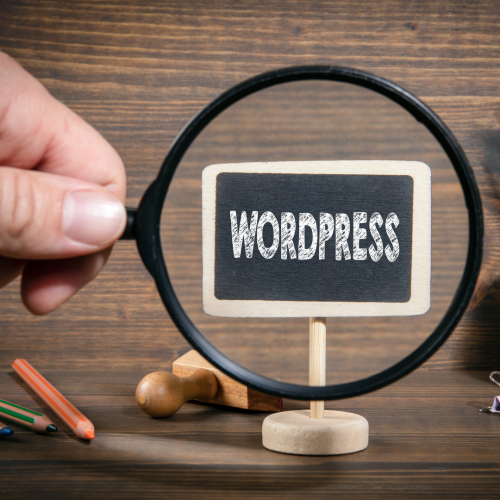Doing simple tasks to speed up your WordPress site can improve its performance and help you get the most out of it. WordPress is a powerful platform but can be slow and sluggish if not appropriately managed.
Thankfully, there are a few simple steps you can take to accelerate your site’s loading time and provide a better user experience for visitors. In this article, we will discuss five easy ways to increase the speed of your WordPress site.
Why You Need To Speed Up Your WordPress Site
It is essential to ensure that your website offers a fast, responsive, and optimized user experience. Therefore, when using WordPress, you must speed up your site’s performance as much as possible. Ensuring your website runs quickly and efficiently allows users to view information and navigate more quickly, resulting in an improved overall user experience.
Additionally, having a speedy site will improve search engine rankings and help more people see your content. Enhancing your WordPress site’s speed may require technical know-how, but the effort is worth it; the faster your website loads, the better your audience and search engine visibility.
How To Optimize WordPress Site Speed
If you’re like many website owners, you understand the importance of having a fast and responsive WordPress site. Optimizing your website’s speed can make all the difference for a good user experience and your search engines rankings.
Fortunately, a few simple steps and best practices can be taken to maximize WordPress site speed. From compressing images to minimizing plugins and caching pages, these five easy tips can help improve the performance of any WordPress-based website quickly and effectively.
1: Optimize Images
Optimizing images and other media files is the first way to speed up your WordPress site. Images are important for any website, as they help create visual interest and draw attention to key elements. However, large image files can significantly slow down page loading times. With proper optimization techniques such as resizing, compressing, and formatting images correctly for web use, you can drastically reduce page loading times without sacrificing the quality or clarity of the imagery.
Compressing image files is integral to speeding up your WordPress site, as large and unoptimized images can significantly slow down loading times. Photoshop and other image editing software are reliable tools for compressing files and offer many customization options to ensure the best quality compression possible.
If you’re unfamiliar with graphic editing, many free plugins are available that make it easy to compress your WordPress images. Smush and EWWW Image Optimizer are popular optimization plugins that allow users to upload and compress their images while maintaining their original resolution. When compressing images, it’s important to keep in mind the balance between reducing file size and maintaining a high-quality image.
What is Lazy Loading?
Lazy loading is a web development technique that helps to improve website performance. Lazy loading of content and components when needed helps reduce the amount of data that needs to be loaded on a given page.
This can significantly improve website load times, especially for websites that contain large amounts of content. Loading resources this way also contributes to a better user experience, as users don’t need to wait for pages that are too long to load.
Lazy loading is thus essential for modern web development and should be incorporated into any website or application that requires high performance.
2: Use a cache plugin or service
Caching is a method of storing frequently used elements in the computer’s memory, meaning that they are instantly accessible when requested again instead of having to be reloaded from scratch each time. This process can help dramatically improve loading times on your website, as certain elements are already available in the memory and ready to use on demand. By using caching plugins like WP super cache or CDN (content delivery network) services like CloudFlare, you can ensure that these elements are always readily available without waiting for them each time they’re needed. This helps minimize delays and makes the user experience much smoother and faster.
This works because when a user first requests an element, it gets stored in their browser’s cache, allowing them to access it quickly the next time they request it. It typically happens with page resources such as scripts, images, and other files, which can take some time to load. The caching plugin or service will then store these elements in the browser’s cache so that when they are requested again, they can be served up instantaneously instead of reloading from the server.
By implementing page caching strategies into your website, you can significantly speed up the loading times of your pages while also providing a better overall user experience. Caching also reduces latency between requests and helps reduce strain on your server resources since it eliminates multiple loads of the same elements. Additionally, a third-party service like CloudFlare can provide additional security for your site by blocking malicious requests before they hit your server.
Finally, caching sites also helps compress large downloads into smaller ones, allowing them to be delivered more quickly than before.
3: Minify Code
Minifying code is a process used to reduce the size of files containing source code, making them more accessible and faster for browsers to interpret and render content on the page. You can achieve this by removing extra characters such as white spaces, line breaks, and other unnecessary elements from the source code, resulting in smaller file sizes that require fewer resources to be sent over the network from the web server to the browser. As a result, pages can load more quickly even when under heavy traffic loads since fewer resources are required from both client (browser) and web server endpoints at any time.
Minifying code also helps improve website performance by decreasing the amount of data transferred over the internet. Reducing the number of characters within a file means fewer data needs to be transmitted and received by devices connected via a network. This makes it easier for visitors and customers to access content (like blog posts) on a website with minimal delays or buffering times due to heavy traffic loads. Additionally, streamlined file sizes can help save bandwidth costs associated with hosting your site online and lessen your environmental footprint since fewer resources are needed overall.
When minifying code, developers must be careful not to break existing functionality within the project they’re working on or interfere with already running processes on the server. It’s also crucial that all minified files are properly documented so that further changes or updates can be made without difficulty. Additionally, some programming languages, such as HTML and CSS, require special formatting for browsers to interpret them correctly; therefore, developers must review coding conventions before attempting any changes.
Overall, minifying code offers many benefits for WordPress sites looking to increase their loading times while decreasing bandwidth usage. By removing all unnecessary characters from source files, page loading times can improve significantly while ensuring all existing processes remain undisturbed during these changes. As always, coding must be reviewed before making any drastic changes to avoid potential issues.
4: Remove Unnecessary Plugins
When it comes to WordPress plugins, quality is always preferred over quantity. That being said, running too many at once can negatively impact the speed of your website and loading times. Even if you’re not actively using a plugin, if it’s active, it can still be doing unnecessary work in the background and consuming excessive resources. It might be time to consider pruning the number of active plugins you have installed.
To start, review to identify any plugins you are sure you won’t use anymore – deactivate them, then test your site afterward to check that everything is functioning correctly. Once verified, delete these plugins, so they don’t waste any more of your website’s resources. After that, deactivate the remaining plugins one-by-one and monitor whether this positively affects your website’s speed. If one or more appear to slow down your site significantly, research some lightweight alternatives that offer similar features but may require fewer server resources for their operation.
Generally speaking, several advantages are associated with reducing the number of active plugins running on your WordPress site. Firstly, fewer moving parts may lead to improved reliability, given that there will be fewer potential areas where things could go wrong due to plugin errors or incompatibilities. Secondly, with fewer plugins in play, there should also be a decrease in overall complexity from an operational perspective – meaning less time spent managing each individual plugin and troubleshooting issues related to them when they arise over time. Finally, as already mentioned above, having fewer active plugins usually leads to an improved page load time, as there will be less competition for server resources when visitors land on your pages – leading to happier customers all around!
5: Choose A Quality WordPress Host
Quality web hosting is the basis for ensuring that your WordPress site operates at high speed. Careful selection of your hosting provider and plan can significantly impact your website’s performance. It would be best if you chose a plan that meets your requirements in terms of bandwidth and performance.
Most WordPress hosting companies offer four hosting plans: shared, dedicated, virtual private server (VPS), and managed WordPress hosting plans. Shared hosting plans are suitable for websites with modest traffic levels and basic requirements, while dedicated servers provide maximum control over the configuration but require more technical expertise to maintain. VPS hosting offers a middle ground between shared and dedicated server plans, providing more resources than shared hosts while allowing users to keep costs down by sharing hardware with other customers. Managed WordPress packages give you access to features such as automated backups and updates, scalability options, enhanced security measures, and customer support specific to running WordPress sites.
Choosing a Host
When selecting a web host for your WordPress site, it is essential to consider their uptime record, customer service level (including response times), pricing structure, security measures in place (SSL certificates, etc.), scalability options available (for when traffic increases or decreases), the types of applications supported by their system, backup methods used by the provider, whether automated backups are available as standard or an add-on feature, database sizes supported (based on resource usage), software versions supported for compatibility reasons and any included extra features that you may find helpful such as caching systems or content delivery networks (CDNs).
It is also wise to read reviews from other customers before making a purchase decision since this will give you an insight into how reliable the web host can be when it comes to uptime levels and customer service response times. Understanding these factors will help you make an informed decision when selecting a suitable web host for your WordPress website.
Got a slow WordPress Website?
Speeding up your website doesn’t have to be a complicated and tedious task. You can get your WordPress site running faster than ever with just a few simple steps. However, if you’re not sure how to go about it or are overwhelmed by the task, there’s no need to worry—Sunrise Virtual Assistance Services can help out.
At Sunrise Virtual Assistance Services, our expert team has extensive experience with WordPress speed optimization. We know exactly what needs to be done to ensure that websites run quickly and efficiently. Our services include optimizing elements such as images and scripts, setting up caching plugins, minifying HTML, CSS, and JavaScript files, improving server response time, and configuring content delivery networks.
We also offer advanced WordPress optimization services, which include database optimization and improving security protocols like SSL certifications.
In addition, our team of professionals can provide you with advice on the best plugins available for speeding up your website and recommendations on the overall site structure that will aid in increasing page loading speeds. Furthermore, Sunrise can migrate your existing website from shared hosting to a Cloud solution such as Amazon Web Services or Google Cloud Platform for increased reliability and better performance of your WordPress site. Ultimately, with our professional assistance, you can rest assured that all of the necessary measures are taken in order to ensure maximum speed and reliability from your WordPress site.


